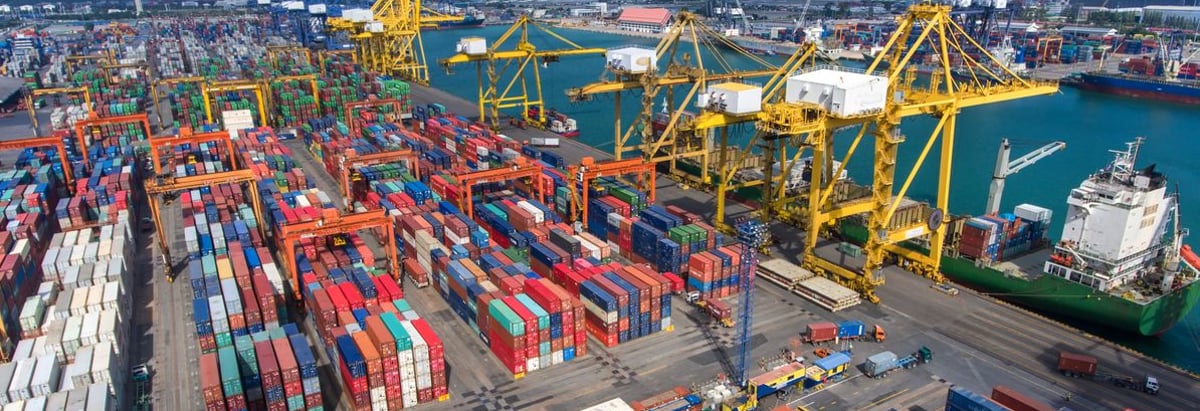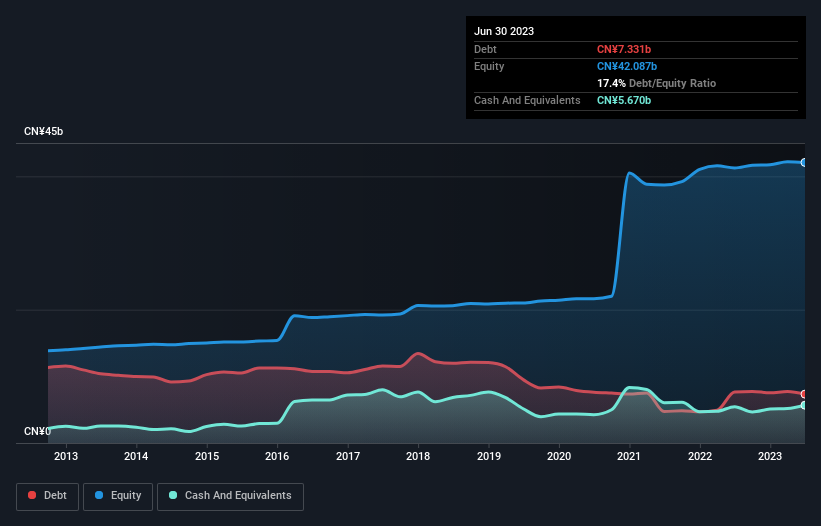
Legendary fund manager Li Lu (who Charlie Munger backed) once said, 'The biggest investment risk is not the volatility of prices, but whether you will suffer a permanent loss of capital.' So it might be obvious that you need to consider debt, when you think about how risky any given stock is, because too much debt can sink a company. We note that Liaoning Port Co., Ltd. (HKG:2880) does have debt on its balance sheet. But should shareholders be worried about its use of debt?
What Risk Does Debt Bring?
Debt and other liabilities become risky for a business when it cannot easily fulfill those obligations, either with free cash flow or by raising capital at an attractive price. If things get really bad, the lenders can take control of the business. However, a more frequent (but still costly) occurrence is where a company must issue shares at bargain-basement prices, permanently diluting shareholders, just to shore up its balance sheet. Having said that, the most common situation is where a company manages its debt reasonably well - and to its own advantage. When we think about a company's use of debt, we first look at cash and debt together.
Check out our latest analysis for Liaoning Port
What Is Liaoning Port's Net Debt?
You can click the graphic below for the historical numbers, but it shows that Liaoning Port had CN¥7.33b of debt in June 2023, down from CN¥7.64b, one year before. However, because it has a cash reserve of CN¥5.67b, its net debt is less, at about CN¥1.66b.

A Look At Liaoning Port's Liabilities
The latest balance sheet data shows that Liaoning Port had liabilities of CN¥6.87b due within a year, and liabilities of CN¥8.70b falling due after that. Offsetting these obligations, it had cash of CN¥5.67b as well as receivables valued at CN¥4.32b due within 12 months. So it has liabilities totalling CN¥5.58b more than its cash and near-term receivables, combined.
Of course, Liaoning Port has a market capitalization of CN¥32.6b, so these liabilities are probably manageable. But there are sufficient liabilities that we would certainly recommend shareholders continue to monitor the balance sheet, going forward.
We measure a company's debt load relative to its earnings power by looking at its net debt divided by its earnings before interest, tax, depreciation, and amortization (EBITDA) and by calculating how easily its earnings before interest and tax (EBIT) cover its interest expense (interest cover). Thus we consider debt relative to earnings both with and without depreciation and amortization expenses.
While Liaoning Port's low debt to EBITDA ratio of 0.40 suggests only modest use of debt, the fact that EBIT only covered the interest expense by 6.5 times last year does give us pause. But the interest payments are certainly sufficient to have us thinking about how affordable its debt is. On the other hand, Liaoning Port's EBIT dived 12%, over the last year. We think hat kind of performance, if repeated frequently, could well lead to difficulties for the stock. There's no doubt that we learn most about debt from the balance sheet. But you can't view debt in total isolation; since Liaoning Port will need earnings to service that debt. So when considering debt, it's definitely worth looking at the earnings trend. Click here for an interactive snapshot.
Finally, while the tax-man may adore accounting profits, lenders only accept cold hard cash. So it's worth checking how much of that EBIT is backed by free cash flow. Looking at the most recent three years, Liaoning Port recorded free cash flow of 34% of its EBIT, which is weaker than we'd expect. That weak cash conversion makes it more difficult to handle indebtedness.
Our View
When it comes to the balance sheet, the standout positive for Liaoning Port was the fact that it seems able handle its debt, based on its EBITDA, confidently. However, our other observations weren't so heartening. For example, its EBIT growth rate makes us a little nervous about its debt. We would also note that Infrastructure industry companies like Liaoning Port commonly do use debt without problems. Looking at all this data makes us feel a little cautious about Liaoning Port's debt levels. While debt does have its upside in higher potential returns, we think shareholders should definitely consider how debt levels might make the stock more risky. The balance sheet is clearly the area to focus on when you are analysing debt. However, not all investment risk resides within the balance sheet - far from it. Case in point: We've spotted 1 warning sign for Liaoning Port you should be aware of.
If, after all that, you're more interested in a fast growing company with a rock-solid balance sheet, then check out our list of net cash growth stocks without delay.
New: AI Stock Screener & Alerts
Our new AI Stock Screener scans the market every day to uncover opportunities.
• Dividend Powerhouses (3%+ Yield)
• Undervalued Small Caps with Insider Buying
• High growth Tech and AI Companies
Or build your own from over 50 metrics.
Have feedback on this article? Concerned about the content? Get in touch with us directly. Alternatively, email editorial-team (at) simplywallst.com.
This article by Simply Wall St is general in nature. We provide commentary based on historical data and analyst forecasts only using an unbiased methodology and our articles are not intended to be financial advice. It does not constitute a recommendation to buy or sell any stock, and does not take account of your objectives, or your financial situation. We aim to bring you long-term focused analysis driven by fundamental data. Note that our analysis may not factor in the latest price-sensitive company announcements or qualitative material. Simply Wall St has no position in any stocks mentioned.
About SEHK:2880
Excellent balance sheet second-rate dividend payer.
Market Insights
Community Narratives



